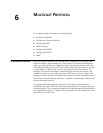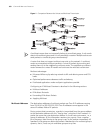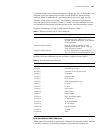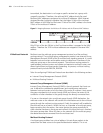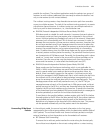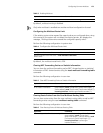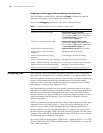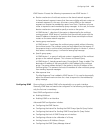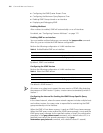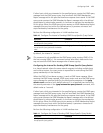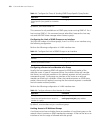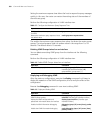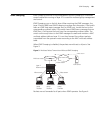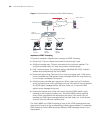Configuring IGMP 175
IGMP Version 2 boasts the following improvements over IGMP Version 1:
■ Election mechanism of multicast routers on the shared network segment
A shared network segment means that there are multiple multicast routers on
a network segment. In this case, all routers running IGMP on the network
segment can receive the membership report from hosts. Therefore, only one
router is required to send membership query messages. In this case, the router
election mechanism is required to specify a router as the querier.
In IGMP Version 1, selection of the querier is determined by the multicast
routing protocol. IGMP Version 2 specifies that the multicast router with the
lowest IP address is elected as the querier when there are multiple multicast
routers on the same network segment.
■ Leaving group mechanism
In IGMP Version 1, hosts leave the multicast group quietly without informing
the multicast router. The multicast router can only depend on the timeout of
the response time to confirm when hosts leave the group. In Version 2, when a
host leaves a multicast group, it will send a leave group message.
■ Specific group query
In IGMP Version 1, a query of multicast routers is targeted at all the multicast
groups on the network segment. This is known as General Query.
In IGMP Version 2, besides general query, Group-Specific Query is added. The
destination IP address of the query packet is the IP address of the multicast
group. The group address domain in the packet is also the IP address of the
multicast group. This prevents the hosts of members of other multicast groups
from sending response messages.
■ Max response time
The Max Response Time is added in IGMP Version 2. It is used to dynamically
adjust the allowed maximum time for a host to respond to the membership
query message.
Configuring IGMP Once multicast is enabled, IGMP will automatically run on each interface.
Generally, IGMP does not need to be configured. In the following configuration,
only the first one is mandatory.
Basic IGMP configuration includes:
■ Enabling Multicast
■ Enabling IGMP on an Interface
Advanced IGMP configuration includes:
■ Configuring the IGMP Version
■ Configuring the Interval for Sending the IGMP Group-Specific Query Packet
■ Configuring the Interval for Sending IGMP Group-Specific Query Packet
■ Configuring the Limit of IGMP Groups on an Interface
■ Configuring a Router to be a Member of a Group
■ Limiting Access to IP Multicast Groups
■ Configuring the IGMP Query Message Interval



